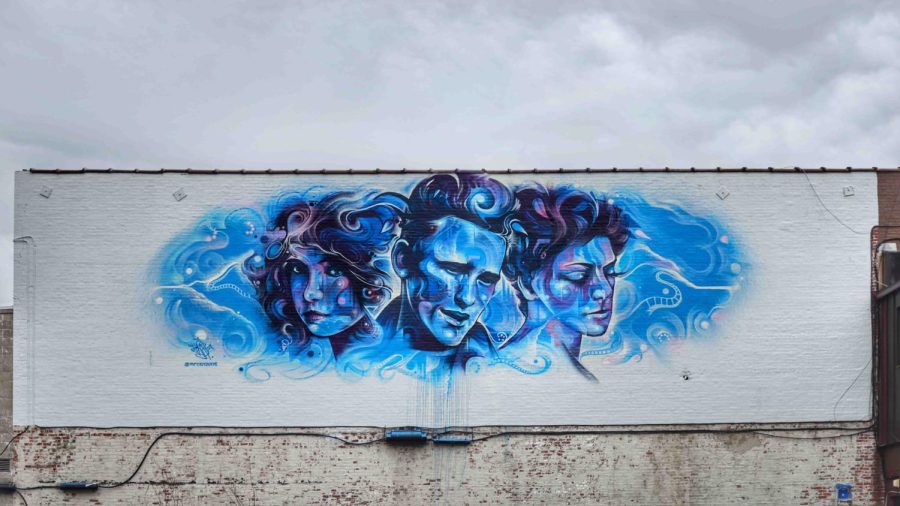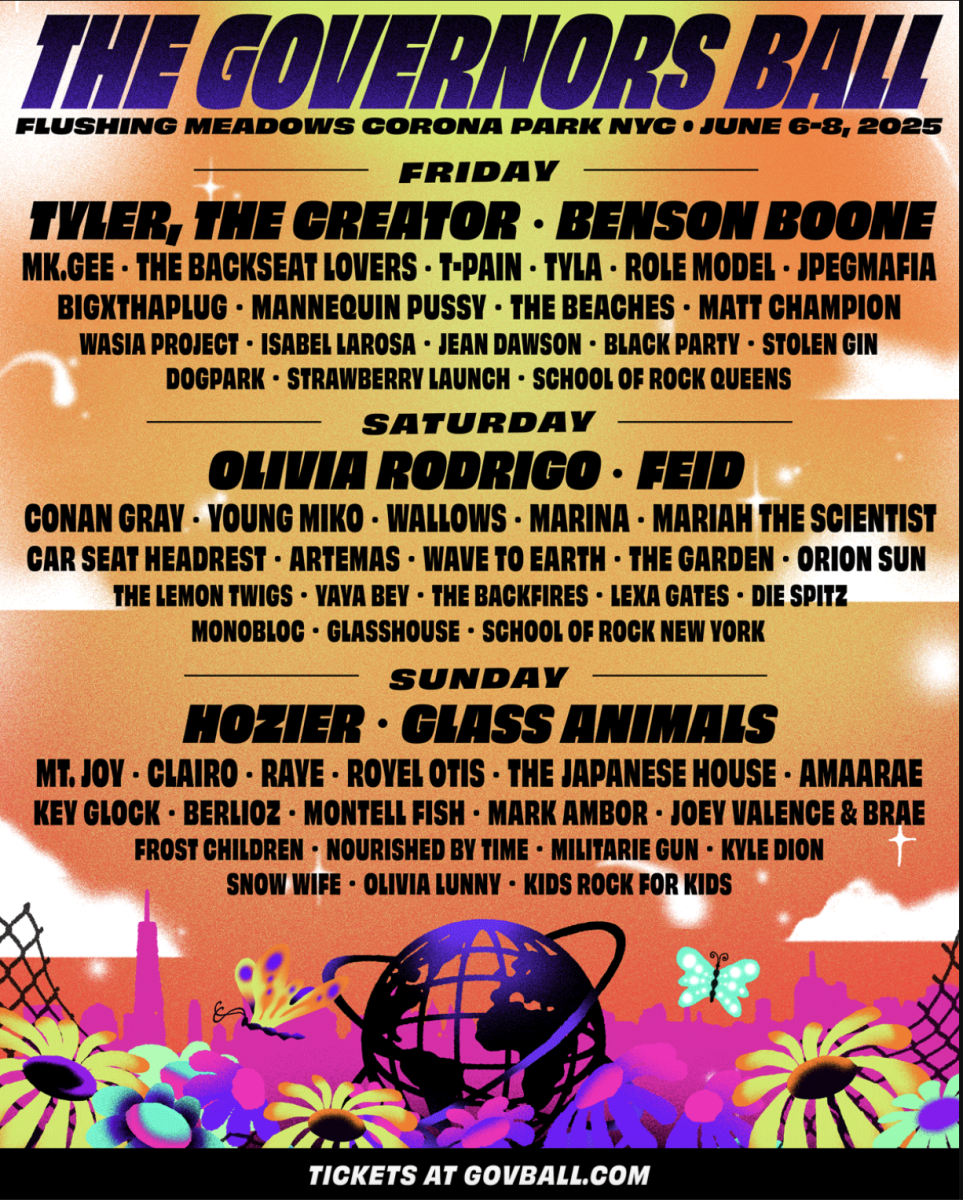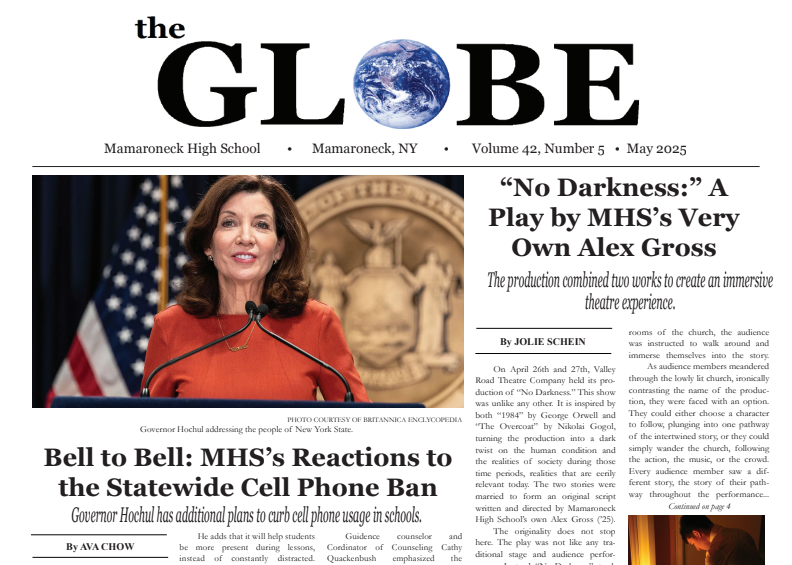How Street Art Impacts the Mamaroneck Community
All around Larchmont and Mamaroneck, residents find murals with various meanings and art styles. What is their role?
Photo Courtesy of @StreetArtMankind
A mural of Mamaroneck movie stars on the backside of a building off of Mamaroneck Ave.
February 28, 2022
Art: the expression of human creative skill and imagination, producing works to be appreciated primarily for their beauty or emotional power. As the exact definition states, art is to be appreciated. So why not let people express themselves through this activity? Specifically, in Mamaroneck, street art is present in our daily lives. A small poll conducted by the Globe found that 90% of Mamaroneck High School respondents think street art is an important part of society, and that it adds a pop of color in such a gray-scaled world. However, there are also many people in the community with completely different opinions on this subject. A large number of people believe that street art can be “out of place” or can make towns look “messy,” which leads to the main question: is street art in a community a reasonable way of self-expression, or should it be done somewhere else?
In an article written by a student at Boston University, polls stated that street art was “literally the writing on the wall – the voice of those who cannot find any other way to publish their thoughts anonymously.” Of course, art is important, but it is even more precious to the people who are not listened to or heard in society. Max Szuchman (‘25) has a very strong opinion on the subject, and while some may consider it destructive, he disagrees because “it adds a cultural element and makes art accessible to everyone,” which was also written in the BU poll. Another MHS student, Juliette Remy (‘23), believes that street art can grow into something even bigger than itself. It can “evolve from street art to culturally referenced art like Keith Haring.” The difference between street art and graffiti is that some graffiti artists “embrace the fact that they get arrested because it gives them the kind of prime-time exposure that they crave” as a result of disrespectful vandalization. Art is defined as an expression of human skill and emotion, but graffiti is writings scribbled illicitly on public property. Elle Krywosa (‘22) declares, “There’s a place and a time for street art, and I can understand why people think that it’s invasive or a violation of public property.” Even though the murals in our community were legally painted, statistics have shown that older people dislike street art twice as much as people under twenty. Be that as it may, street art is making a comeback – specifically in New York, which is, at this present time, the most artistic city in the world. All in all, street art is not only popular but gives people the ability to speak up in a world in which they feel as if they don’t have a voice.
Particularly in Mamaroneck, the art that surrounds us not only brings color into our town, but every mural put together represents crucial events at the start of our community. For example, the painting on Mamaroneck Avenue by Victor Ash is a black-and-white illustration of four people looking to the side. People brush past it, but most likely didn’t notice that all four of these people each represent a different ethnic group. While this may be imprecise, the different nose shapes show how dissimilar people can be while still being insanely alike. The visages portrayed by these people all show similar emotions such as seriousness, sadness, and even helplessness. A slightly less well-known mural is “Skinny House” by Loic Ercolessi, which is located on Hoyt Avenue, across from the train station. It is a tall, skinny house, decorated with purple and yellow stripes. There is a sentence that reads, “It’s not the size of the house that matters, what matters is the soul you put into it to make it home.” Once again, a seemingly insignificant illustration can actually show a particularly important part of our society, in this case, one of the first families to live in Mamaroneck. The Skinny House is an actual house in our community, and it is classified as an official landmark. Gathering the information that has been shared thus far, street art is made to spread important messages to society, but it can sometimes seem out of place to people who don’t know the whole backstory.
Art is used to express opinions through emotional and illustrative power, but sometimes it is slightly more complicated to analyze than you would think. Mamaroneck in particular is surrounded by street art, whether it’s the Corner Store or Mamaroneck Avenue. Many people believe these works are out of place, and they have every right to. However, instead of criticizing these illustrations, try to understand what point the artist was trying to get across. Mamaroneck isn’t a large town where it would be difficult to display your opinions, but it is easy to not feel heard, and for some people, art is how they share their feelings and ideas. Street art can be interpreted in many different ways.
But, in the end, that still leaves the question: is this art sharable self-expression, or is it better done in a private setting?







